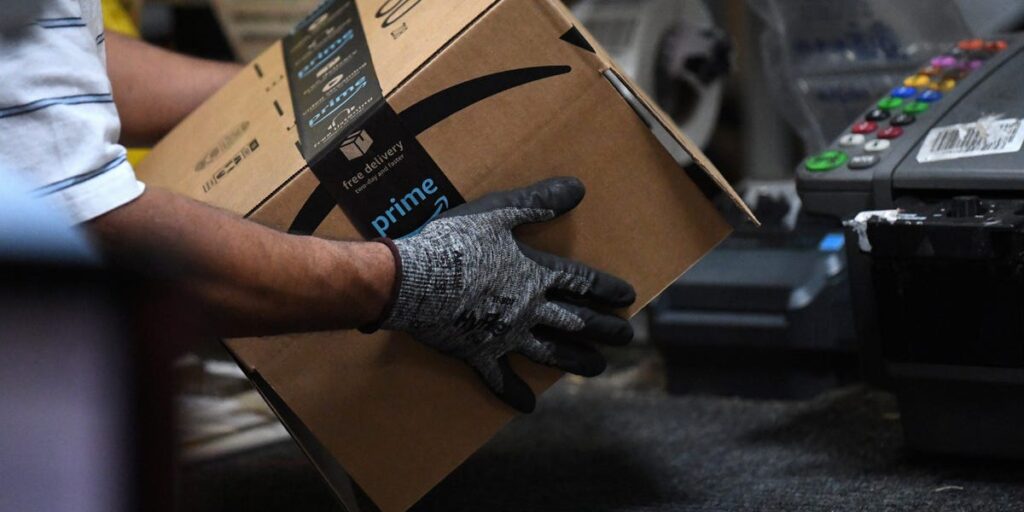One of the most-purchased items so far during Amazon’s Prime Day isn’t an Alexa-enabled device or the Nintendo Switch 2. It’s a hydration drink mix.
Liquid IV packets were the most-bought item by number of units sold during Prime Day’s first day and a half, according to Numerator data that tracked transactions.
Some shoppers have turned to Amazon’s marquee sales event in past years for discounts on electronics or other big-ticket items. This time, though, early results suggest customers are largely buying less-expensive household items, such as cleaning supplies and personal care goods.
This year, Amazon’s Prime Day lasts four days between July 8 and 11. That’s longer than the event has run before, so the final results could differ depending on what shoppers buy in the final days of the sale. (Business Insider’s Reviews team is also covering the best Prime Day deals on products and brands it has tested and reviewed.)
After Liquid IV, Dawn dish detergent and protein shakes were the next most-purchased Prime Day items by volume, according to Numerator. Amazon’s Fire TV Stick — the fourth most-purchased item — was the most popular consumer electronic. Other frequently bought product categories so far include apparel, shoes, and home decor.
Shoppers are also buying lots of cheaper items. The average price per item so far this Prime Day is just over $25, Numerator found. Two-thirds of everything sold so far on Prime Day cost shoppers less than $20.
That’s a clear difference from four years ago, when Amazon-branded electronics, such as the latest Echo Dot speaker and the Fire Tablet, dominated similar early results from Numerator. No household goods were in the top five most-purchased products that year.
Prime Day shoppers may be spending cautiously given worries about tariff-induced price increases later this year, said Sky Canaves, principal analyst at EMARKETER, which shares an owner with Business Insider.
“They are stocking up on essentials, getting a head start on back-to-school and holiday shopping, and pulling up purchases of bigger-ticket items that may cost more later in the year, such as appliances,” Canaves said on Thursday.
Fewer deals, but deeper discounts
A report from Impact Analytics released Wednesday found that Amazon appears to be offering discounts on a narrower range of items than last year.
Impact found that last year, about 40% of Amazon products were discounted for Prime Day. Early results from this year show that the number has dropped by about 24 percentage points.
The report said Amazon’s discounts on many products, such as tools, lawn and garden supplies, and clothing, are deeper than in 2024. The analysis looked at discounts on 1,000 top-selling products in the two days leading up to Prime Day as well as during the early hours of the sale itself.
“Amazon shifted to a more selective, margin-conscious strategy, likely shaped by tariff exposure and input cost pressures,” the report said.
EMARKETER estimates that the four-day event will generate $12.93 billion in sales for Amazon. If Amazon had limited Prime Day to 48 hours, as it has in recent years, EMARKETER estimates sales would have been $8.95 billion.
Despite shoppers’ focus on cheaper essential items, they’re already spending more overall than in previous years.
Numerator found that roughly halfway into this year’s event on Wednesday afternoon, average household spending on Amazon during Prime Day was $126.26. That’s up from about $92 at a similar point four years ago.


